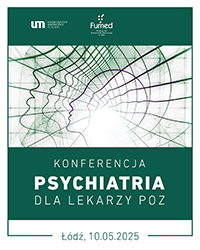Awake craniotomy for low-grade gliomas
Andrzej Podgórski1, Dominika Wrzesień2, Andrzej Koziarski1, Grzegorz Zieliński1
 Affiliation and address for correspondence
Affiliation and address for correspondenceAim: The aim of this study was to evaluate the efficacy of awake brain surgery for benign glial brain tumours in the Department of Neurosurgery of the Military Institute of Medicine in Warsaw. Materials and methods: Between 2020 and 2021, 9 out of 17 patients with a radiological diagnosis of a low-grade glioma located within or in the vicinity of eloquent brain areas were operated on under awake conditions. The average preoperative tumour volume was 29.6 cm3. Preoperative management included a repeat magnetic resonance imaging supplemented with functional magnetic resonance imaging and tractography, as well as neuropsychological assessment. The cortex and subcortical structures were stimulated intraoperatively at 1.5–4 mA. The intraoperative assessment covered: motor functions, speech, and, additionally in two patients, visual field width and contralateral neglect. Results: Based on magnetic resonance imaging on the first postoperative day, complete removal of the tumour was confirmed in 7 patients. In 2 patients, resection was subtotal due to the fact that part of the tumour that infiltrated eloquent structures was left. In 6 patients, transient neurological deterioration was observed in the early perioperative period, which resolved within 2 months after surgery. In 3 patients, histopathological examination revealed a tumour with a higher grade of malignancy than expected. Conclusions: Our experience confirms that surgical treatment of benign glial tumours using direct electrical stimulation in awake patients is an effective and safe method allowing effective tumour resection with a minimised risk of adverse neurological sequelae.











